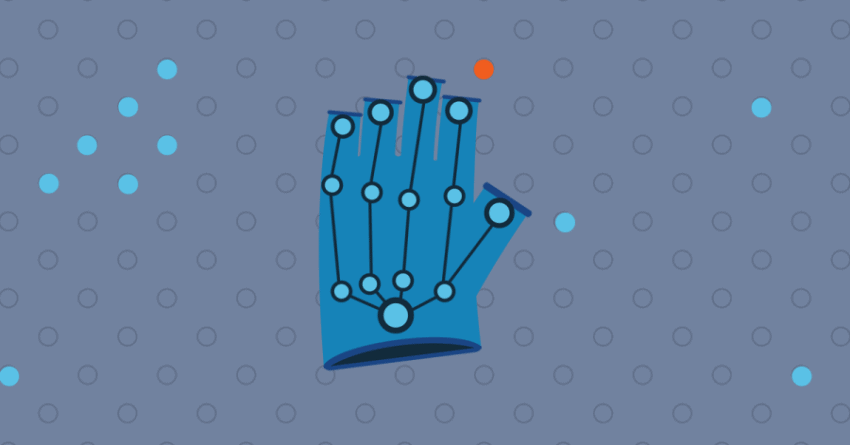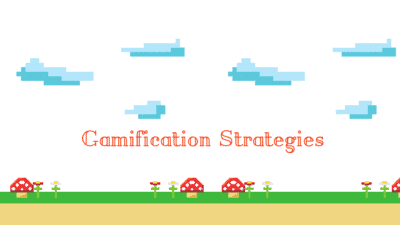How Interactive Content is Going to Change Your Marketing Strategy

Marketing is all about attracting attention and eliciting engagement. People are inundated with content — it’s everywhere. So how can a business stand out? It’s not enough to simply churn out weekly pieces of content. In order to cut through the noise, content has to be high quality, informative, innovative, and visually appealing. And mobile friendly. Shareable. Unique.
And now, interactive.
What is Interactive Content?
Interactive content is content that actively engages the participant. It’s more than just clicks and scrolls. Interactivity is answering questions, filling in the blanks, picking, choosing, uncovering, discovering, exploring, personalizing. It’s actionable information that takes an individual from a passive viewer to something much more. They become an active, invested participant in a content experience. In return, the consumer gets tailored results and hyper-relevant information. That it’s fun is a bonus.
The main interactive content types are polls, landing pages, microsites, reports, brackets, quizzes, idea generators, and calculators. There are also interactive infographics, interactive timelines, interactive white papers, interactive eBooks, interactive videos, case studies, and even presentations that contain interactive elements.
Interactive content asks viewers to go beyond simply tapping a button. Sprinkled into the content experience are sliders, hovers, choices, reveals, and more.
Gamification, the application of game-like elements in non-game content, is a more heavy-handed way of getting people invested in a piece of content.
Whatever the method, consumers of interactive content have to do more than run their eyes along a trail of words and images. They have to think — and respond.
Marketing expert Neil Patel states that good marketers realize the tremendous power of audience response and engagement. If you can engage individuals with your content (and they enjoy the experience you create for them), you build brand affinity.
“Building brand affinity leads to building the relationship, that leads to building trust, that leads to building sales, that leads to building business.” —Neil Patel
The Science Behind Interactive Content
Why does interactive content work so well? Part of the reason, according to SnapApp, is because “humans simply can’t resist the call to test themselves, compete, compare, share their opinion, and have fun. At the same time, there’s a give and take with the content that allows the user to get a very different result or next step in their content journey based on how they answered – and that personalization is appealing. Interactive content is like stuffing a sales development rep into a piece of content.”
With interactive content, there is a higher click rate (people are curious), and a higher completion rate (people invest and engage with the piece of content). Ultimately, this leads to a higher conversion rate.
Why?
The piece of content has informed and educated the participant, so your prospects now understand the value of whatever it is that you were trying to convey.
They also associate your company with the solution to their problem and expertise they’re seeking.
Moving forward, they’re much more likely to click on other content you’ve created, as you’re now a trusted source for them. Down the road, it’s your sales reps they’ll feel comfortable talking to — it’s marketing 101.
How Does Interactive Content Apply to a B2B Digital Marketing Strategy?
In “Interactive Content & The Buyer’s Journey,” Oracle outlines the popular content forms in various stages of the buyer’s journey.
Awareness Stage
During a prospect’s research phase, an individual is most likely to engage in:
Polls
Self-assessments
Knowledge tests
Evaluation Stage
While exploring their options, a buyer typically engages in:
Benchmark assessments
Interactive white papers
Persona assessments
Decision Stage
At the buying stage, people turn most often to
ROI calculators
Galleries
Product pickers
Surveys
As you can see, interactive content can be leveraged throughout the buyer’s journey. It’s great for lead generation, helps inform the user experience, and allows your company to stay relevant and top-of-mind from start to finish.
Some stats to consider:
- Interactive content doubles the conversion rate of traditional, passive content. Kapost
- 91 percent of B2B buyers prefer to consume interactive and visual content. DemandGen Report
- Two-thirds of buyers say customized content helps them make better purchase decisions. Onespot
- 88 percent of marketers agree that interactive content sets them apart from their competitors. Business2Community
- Interactive content generates 4-5x more page views than static content. LinkedIn
- 93 percent of marketing professionals find interactive content to be somewhat or very effective at educating the buyer, versus just 70 percent for static content. Inc
- Most B2B marketers (88 percent) say that nearly a third of their content will be interactive by the end of this year. DemandGen Report
- The average attention span of a consumer is less than 6 seconds. Goldfish have an attention span of 9 seconds, for comparison. Time
Looking to Outsource Content Creation?
Interactive content is an easy sell. It leverages technology and plays to the preferences of modern consumers. Drives engagement. Piques people’s interest. Stands out. It’s memorable.
The problem, then, isn’t whether or not you should create interactive content. That’s a no-brainer. The issue is how to do it. Static content can be churned out efficiently. It takes more planning to bring an interactive piece to fruition, and though it may seem overwhelming at first, there are a few ways in which to simplify the process.
- Beef up your content crew. It may be worthwhile to hire an agency to help with content creation and campaign strategies. You grow your team, increase your marketing impact, and give your internal marketers more time to focus on other projects. What’s not to love?
- Take baby steps. Start out by adding GIFs to your product page. Show your site visitors, rather than tell. Leverage Elementor to bring graphs and icons to life.
- Take these platforms for a test drive. Many of the interactive content creation providers mentioned in this article have trial runs or free versions so that you can explore the capabilities and get a feel for the interface.
Good luck! And if you need help with any other types of consumer interaction, keep DemandZEN in mind. We’re a virtual team of sales enablement professionals whose mission it is to find your B2B prospects and fill your sales pipeline (so you can focus on the fun stuff, like closing…or creating the next article-worthy piece of interactive content)!
You Might Also Enjoy These Posts
Gamification Strategies: Badges in B2B Marketing
7 Reasons Why Relevant Data is Important to Your Organization
Welcome To DemandZEN
DemandZEN specializes in Account-Based Demand Generation and solving the challenges around finding, engaging and converting target accounts into real opportunities for B2B Technology and Services companies.


